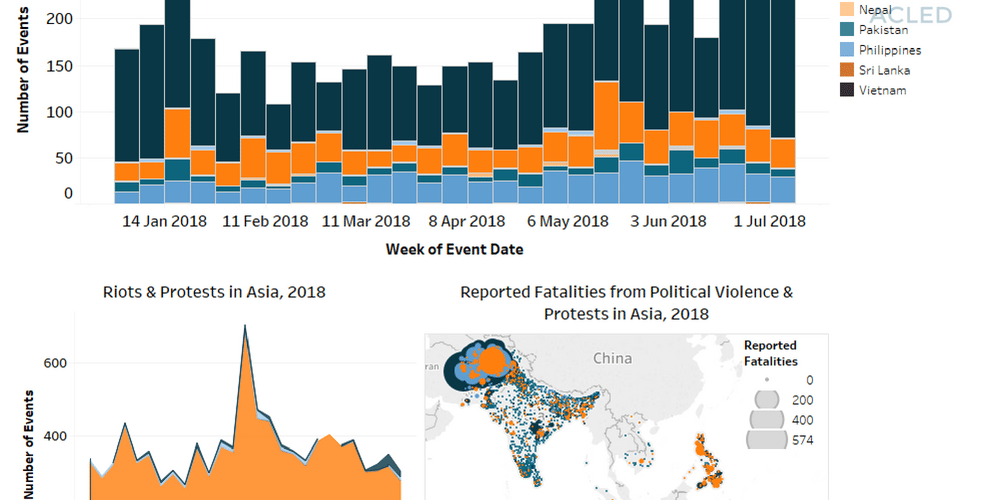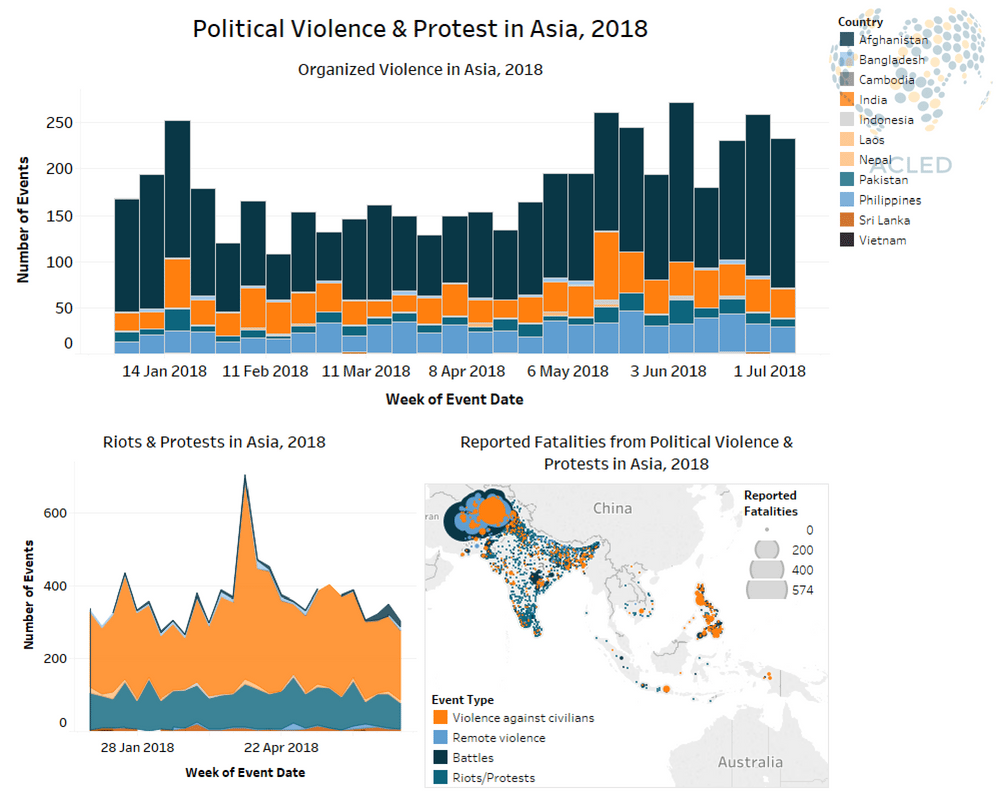Last week in Afghanistan, a suicide bomber reportedly killed and wounded around 40 people in Jalalabad. Most of the victims belong to Afghanistan’s Sikh and Hindu minority groups and included the only Sikh electoral candidate in the upcoming general election. Additionally, the arrest of a district militia leader and close aide of Vice President Dostum led to a number of demonstrations in several provinces throughout the week, including a riot in Maymana City in which one demonstrator was reportedly killed.
In Pakistan, riots and protests were mostly related to inter-party tensions ahead of the 25 July elections and the government’s failure to provide basic amenities like electricity and water. A commander of Tehreek-i-Taliban Pakistan (TTP) was reportedly killed in a US drone strike in North Waziristan on 4 July.
In Indonesia’s Pogar town unidentified assailants exploded three bombs within proximity of one another, one of them injuring a child.
In India, protests were staged across Punjab against the use of drugs; the current state government made an electoral issue around this during the last state election in 2017. Militants continue to launch a high number of hit-and-run grenade attacks targeting security forces in Jammu & Kashmir.
In the Philippines, clashes between the Bangsamoro Islamic Freedom Fighters (BIFF) and the military reportedly resulted in the deaths of at least 16 rebels and 2 soldiers in Maguindanao. Clashes between state forces and New People’s Army (NPA) rebels also continued, reportedly killing at least eight rebels last week. In addition, two mayors and a vice-mayor were assassinated by unidentified assailants, while a regional legislator escaped an ambush. One of the mayors was tagged as a drug lord by President Duterte.
(Data on Thailand and Myanmar have not yet been released; trends are hence not explored above.)
AnalysisAsiaCivilians At RiskCurrent HotspotsRemote ViolenceRioting And ProtestsViolence Against Civilians







